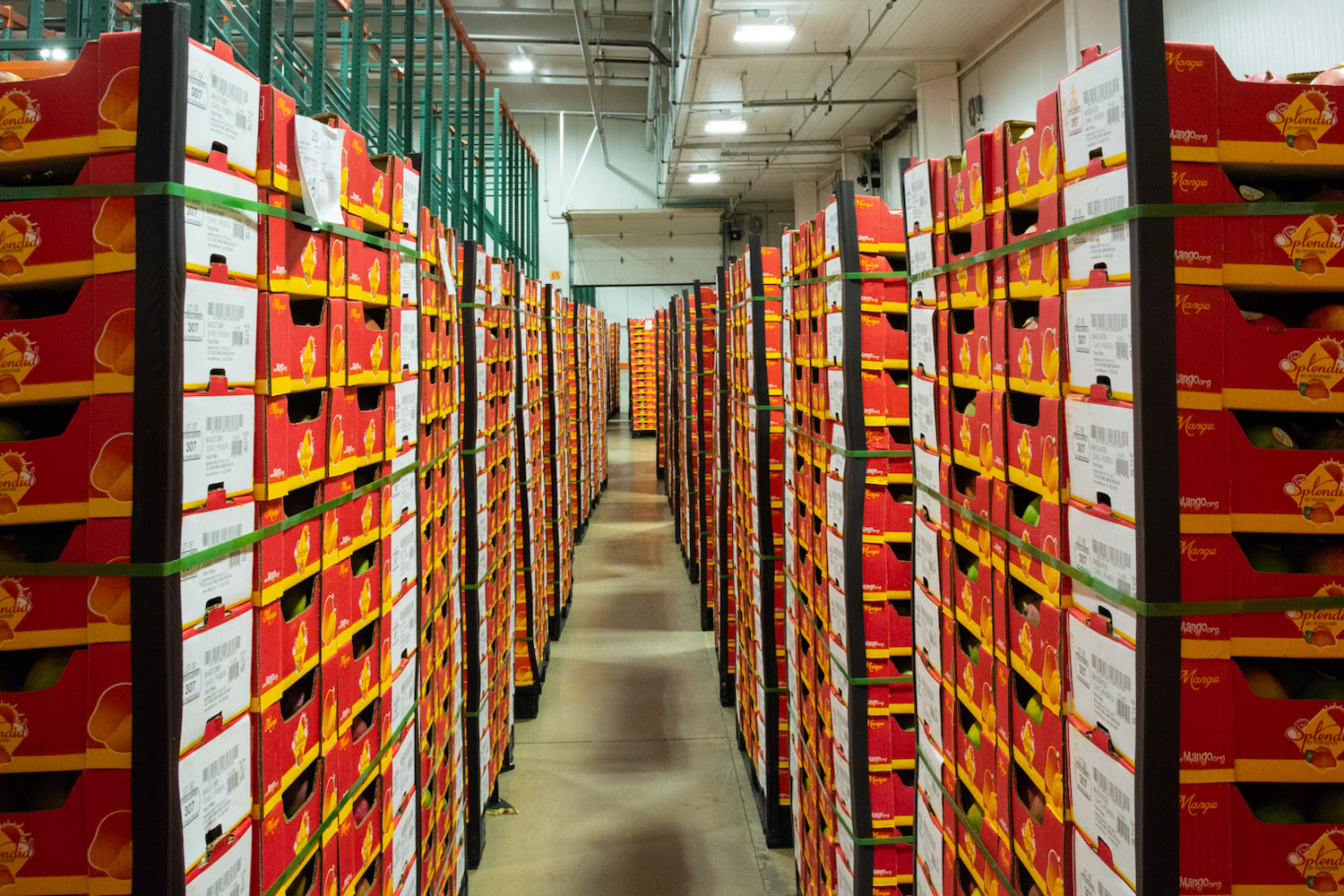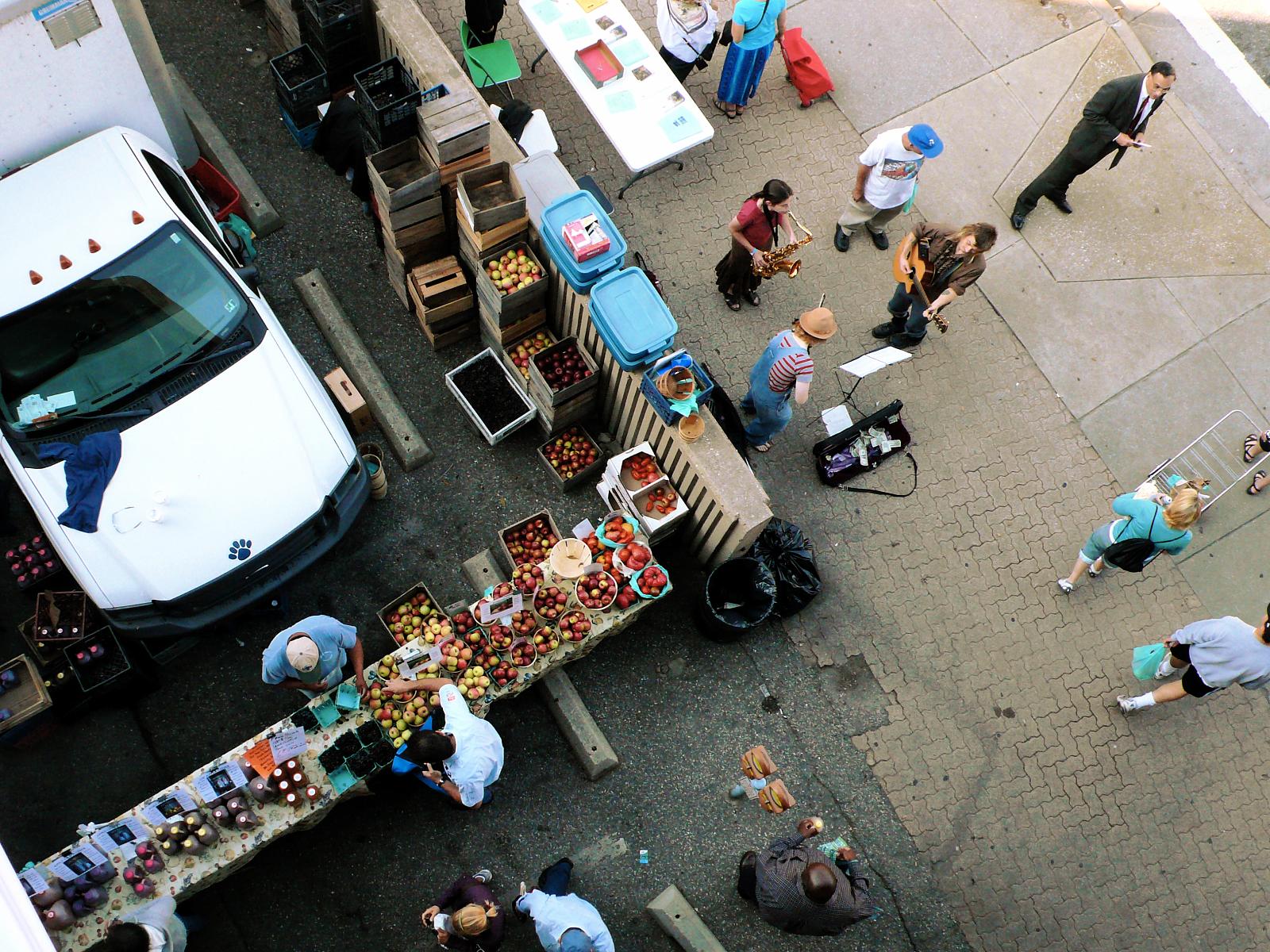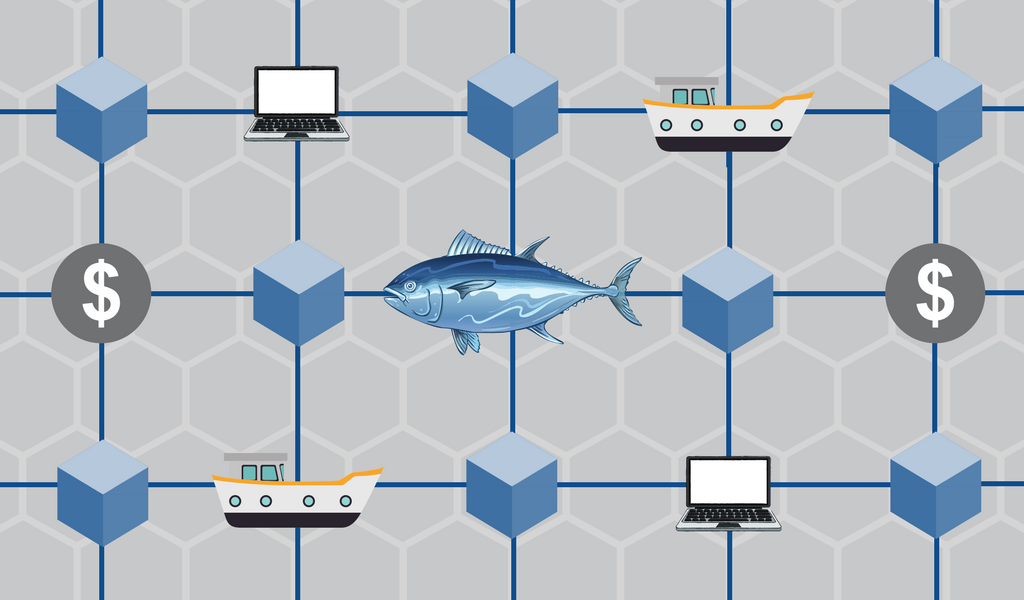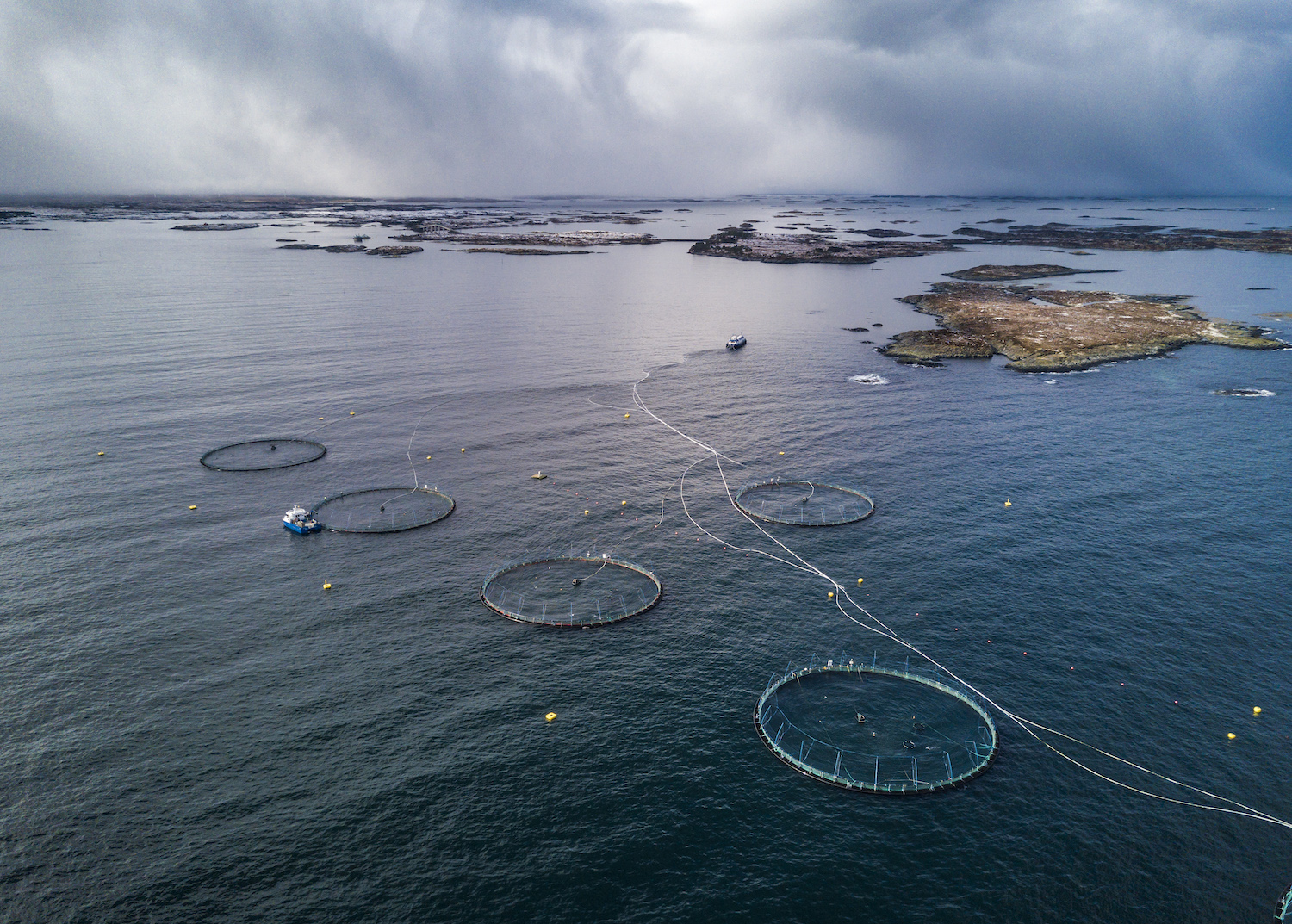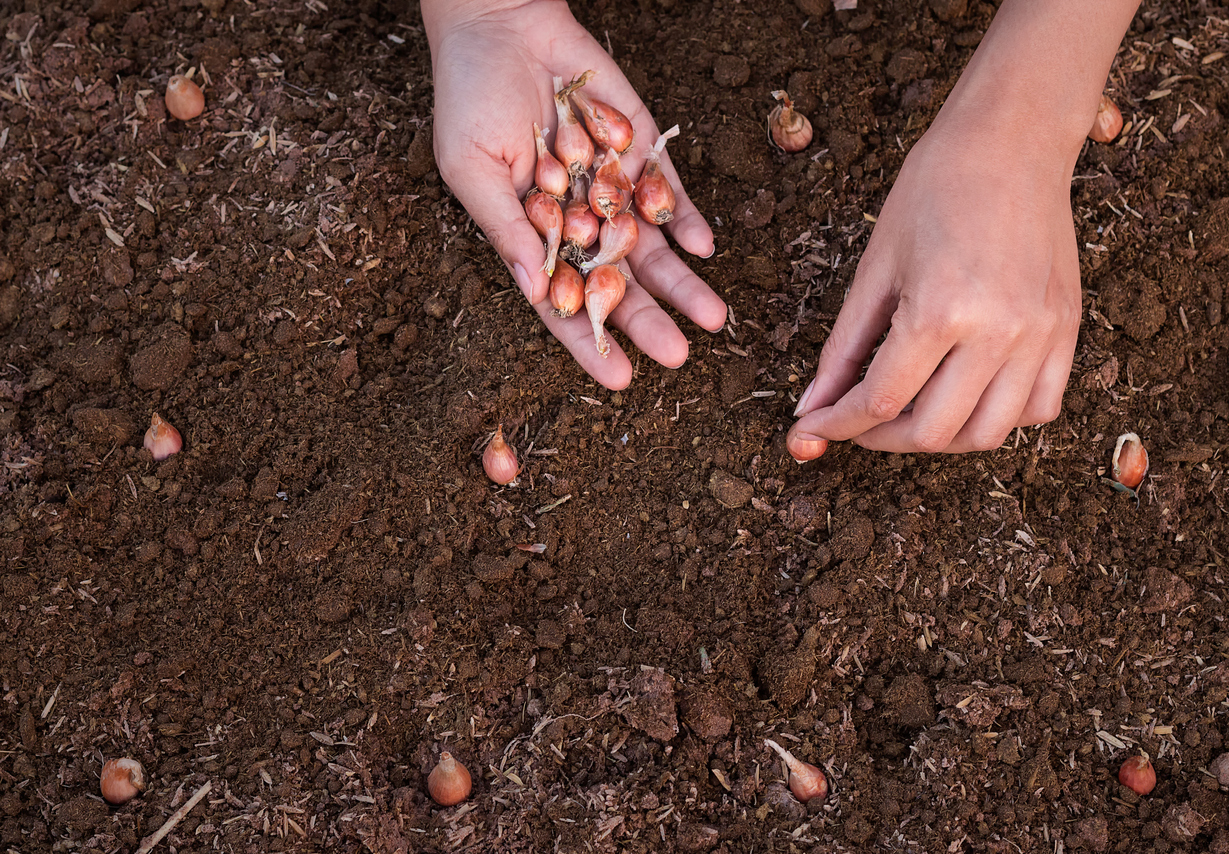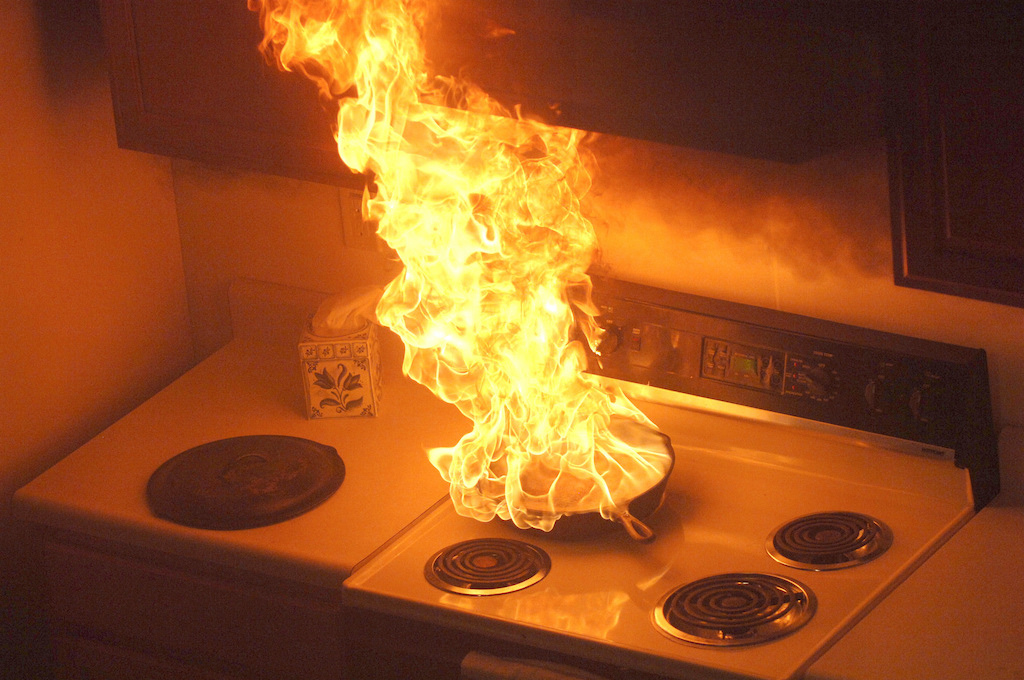UPDATE, May 28, 2019, 5:13 pm, ET: This story was updated with additional information regarding the Compost Cats program.
NOGALES, Arizona—During the October to May season, about a thousand produce-laden tractor-trailers a day rumble through the Mariposa Port of Entry in Nogales, Arizona, each hauling 20 tons of tomatoes, squash, green beans, cucumbers, peppers, mangos, watermelons, and eggplant from farms in the Mexican states of Sonora and Sinaloa. The fruits and vegetables end up in one of the hundreds of wholesale produce houses in Nogales before being trucked to their final destinations across the United States—grocery stores in places as far flung as New York City and Anchorage, Alaska. About 60 percent of the winter vegetables gracing American tables enters the country through Nogales.
But not all of that produce—some 6 billion pounds are imported annually through Nogales—gets where it’s going. For many reasons, around 60 million pounds of edible product becomes unsellable. Buyers might consider it “ugly,” for example, with rain stains or other cosmetic defects. The truck might have been stuck at the border crossing for too long, leading to a shorter shelf life for the produce inside. Or, the commodity price of tomatoes from Florida might have dropped, making a particular load of Mexican tomatoes overpriced for the marketplace.
And when that happens, the excess produce, all 60 million pounds of it, might very well be headed to the local landfill. It’s a practice known as “produce dumping.” And as Lance Jungmeyer, president of Fresh Produce Association of the Americas (FPAA) explains it, “It’s a tiny percentage [of the total imports] but a huge number.” But he adds, “It’s a shared problem, but also a shared opportunity.”
He’s right: In Nogales, this excess edible produce is an opportunity—to provide nutrition for the food insecure, to train the otherwise unemployable, to build new community partnerships and collaborations, and to create economic opportunities in rural Santa Cruz County, where unemployment persists at 11 percent, even while the economy booms in other parts of the country.
Downtown Nogales, Arizona
Nogales, Arizona is one half of Ambos Nogales (Both Nogaleses), the local moniker for Nogales and its sister city of Nogales, Sonora Mexico, which straddle the border about 70 miles south of Tucson. Once upon a time, the two were one small Mexican village, but the 1854 Gadsden Purchase divided the frontier settlement between the two countries. In those days, the border was demarcated by a dirt street through the middle of town. A citizen’s country of residence was determined not necessarily by choice, but by the serendipity of a surveyor’s arbitrary decision. Families lived on both sides of the line and went freely back and forth.
Today, that’s not quite as easy. The line is an imposing 20-foot high steel bollard fence, which the U.S. military recently draped in angry-looking coils of concertina wire from top to bottom on the U.S. side. Crossing through one of the three Nogales ports of entry can take hours, even for pedestrians. Regardless, life in Ambos Nogales continues much as it has for decades. Despite the difficulties, residents of the two cities travel back and forth to shop, connect with friends and relatives, and do business with each other.
Ambos Nogales. The 18-foot-high border fence, recently strung with concertina wire by the U.S. military, separates Nogales, Sonora, Mexico (top left) from Nogales, Arizona.
Nogales, Sonora, a city of 500,000, is a manufacturing hub. Maquilas, factories owned by mostly U.S. corporations, employ thousands of workers to build computers, electronics, and parts for the automotive and aerospace industries, which are then shipped back across the border.
Nogales, Arizona, with its 21,000 residents, is a produce town. It’s been that way since 1895, when the first shipment of Mexican tomatoes arrived at the border on a train. Now, more than 20 percent of the jobs and about 25 percent of the payroll in the county are directly related to the importation and distribution of Mexican winter fruits and vegetables. Almost everyone I talked with in Nogales told me they’re proud of the fact that their small town is feeding America.
Up to 40,000 commercial trucks a month cross into the United States at the Mariposa Port of Entry
Borderlands Produce Rescue began 24 years ago as a Nogales, Arizona food bank. But as executive director Yolanda Soto tells it, she and the board soon realized the organization didn’t exactly fit the traditional food bank model. Borderlands doesn’t accept government commodity processed foods, doesn’t qualify clients based on income or residence, and charges a token amount to people who pick up food. It also feeds people across the border, something traditional food banks can’t do. Soto says that, “Because this produce comes from Mexico and we’re a border community, naturally we’re going to share it with our sister state of Sonora.”
Instead of remaining a food bank, the organization changed its focus to rescuing produce. The indefatigable and energetic Soto is a Nogales native, so she pulled out her Rolodex and started knocking on doors at the produce houses to educate them about the benefits of donating their unwanted surplus to the organization. Dumping a load of produce at the local landfill is an expensive option. The dump charges $40 a ton, so a full load could cost as much as $900, not including the costs of the truck, fuel, and the driver’s time. Donating, on the other hand, not only saves the produce wholesalers money, but allows for tax savings and a rebate on some of the import fees. To Soto, it’s a no-brainer.
When a company has a load of unwanted produce, it calls Border Produce Rescue, and Soto dispatches a truck immediately. When the truck returns to the warehouse, Jesus Serrano, the operations director, takes inventory and decides which of the organization’s four programs will reap the bounty.
Veggies R Us serves the Ambos Nogales community. Anyone, without regard to citizenship, country of residence, or ability to pay, can visit the warehouse and, for a donation of $5, can leave with 100 pounds of produce. Local social-service agencies—everyone from the Boys and Girls Club to senior centers and others on both sides of the border—can also pick up loads at no charge. Soto admits that the current issues at the border have made it more difficult for Mexican clients. They may have to wait hours to cross to the U.S. side, and then on the way back, Mexican customs agents have been known to arbitrarily confiscate the produce.
Yolanda Soto, president and CEO of Borderlands Produce Rescue
Produce Travels is an opportunity for agencies across 24 states to access fresh fruits and vegetables. When the warehouse has a glut of one particular variety in what’s known in industry parlance as “95-percent good condition,” meaning 95 percent of the product is still edible and not spoiled, Soto puts the word out across the country. Agencies send their own trucks to pick up the loads at a nominal cost.
Potpourri for Animals and Compost (PAC) sends anything that isn’t fit for human consumption to farms and ranches across Santa Cruz County for use as animal feed and compost. Except for jalapenos. “Cows don’t like jalapenos,” Soto laughs.
Anything left after all of the programs have been supplied ends up in the landfill. Soto estimates that’s about 4 percent of the total product they rescue.
Because the organization is small and works on what Soto calls “a papier-mâché budget,” for the past 20 years she’s relied on labor from a group of 12 incarcerated men from the Arizona Department of Corrections, who are paid a small hourly wage (on the high end of pay for state prison jobs) and trained to operate the forklifts Borderlands uses in its warehouse. “We couldn’t do this without them,” Soto says. “They’re the backbone of the organization.” In addition to their warehouse work, during the slow season the men can explore their creative sides. Soto’s office is adorned with dozens of Frida Kahlo-esque paintings done by some of the inmates. (I was not able to independently verify the claims of the program with the incarcerated participants.)
There’s plenty more Soto would like to see Borderlands Produce Rescue accomplish, but with a mostly part-time staff of nine, not including the inmates, and a limited budget, things like nutrition and cooking classes will have to wait. She hopes that maybe a volunteer grant writer or chef, or even a philanthropist, will step forward to help. “Everybody has an inherent right to eat nutritiously,” Soto says. “We also believe we all have an obligation to help each other.”
Around the corner from the Borderlands Produce Rescue warehouse sits the Nogales center for the Community Food Bank of Southern Arizona (CFB). Based in Tucson, CFB’s roots go back to 1975 and to the Food Action Coalition of Tucson, an advocacy group. Today, CFB is a member of Feeding America, the national association of food banks, has seven locations across Southern Arizona, and serves 190,000 people annually. According to Dana Yost, chief operating officer, the Nogales location, with upwards of 4,000 clients a month, is the second busiest in the system, behind only Tucson.
CFB began rescuing produce in Nogales after opening the food bank there 12 years ago. “We’ve seen phenomenal growth in the past three to four years,” says Yost. The organization has worked not only with importers and brokers, but also with growers in Mexico. Most of the produce recovered stays in Santa Cruz County, but some ends up in the other CFB facilities in Arizona and even in food banks in places like Albuquerque, New Mexico; Denver, and Colorado Springs, Colorado.
“We position ourselves as a business solution providing transportation logistics to move product out of the donor’s facility so they have room for new product,” says Yost. “We’re an alternative to dumping. Once a product can’t be sold commercially, it becomes waste, so what do they do with it at that point?”
 Bob Miller
Bob Miller The Community Food Bank of Southern Arizona rescues excess produce and distributes it to the hungry in Nogales and Tucson as well as to other food banks in the region
Yost says CFB’s five food banks, community farm, and community kitchen are also resource centers, offering services including legal aid, parenting and finance classes, job training, and other opportunities that might otherwise be lacking in the local community. “We’re not just feeding people day to day,” says Yost, “although that’s critically important. If someone is hungry they need food today, but we’re also working on the root causes of hunger. What does this person need today to pull themselves out of poverty? We’re not going to feed ourselves out of this problem. It’ll still be here 50 years from now.”
Warehouse worker Ruben Portillo moves a pallet of organic sweet peppers at Wilson Produce
Robert Egger, founder of DC Central Kitchen in Washington, D.C., and an expert on addressing hunger through social enterprise, agrees. “Redistributing food isn’t fighting hunger. It’s feeding people, which is right and just, but if we’re going to go at this in a deliberate way, we have to tether every morsel of food to some kind of independence,” he says. “The future isn’t in how many pounds you move, it’s in how much you squeeze out of every ounce you get.”
Egger envisions engaging youth in job training and elders in meaningful volunteerism by building a program that would not only rescue produce in Nogales, but also repurpose, stabilize, and preserve it through processing. Then it would either be served that day through meal programs, or Cryovac packaging would be used to extend its shelf life. The food would be available year-round to institutional food buyers, like hospitals, as well as to food banks and other hunger programs. He sees the possibility to create what he calls “nutraceuticals,” food intended for the special dietary and nutritional needs of elders to keep them active and productive for as long as possible.
“Look, you have a huge opportunity in Nogales and Southern Arizona to access a lot of this food, and you can use it to train people in Nogales and Tucson,” he tells me. “If you talk to any town in America, they want two things: They want jobs for their young people and they want healthy meals for their old people. So, here’s how you can do both.”
The Fink Family Foundation, which invests in social enterprises focused on building sustainable food systems, invited Egger to Nogales to meet with local stakeholders, including Fresh Produce Association of the Americas (FPAA) and others in the produce business. Also invited were local government and agencies—Borderlands Produce Rescue, CFB, and others—on both sides of the border. According to Hannah Semler, the foundation’s project manager, the goals of the two meetings she conducted this past spring were to build relationships and brainstorm a unified approach to policy, business, and social good. The work was intended to benefit not just Ambos Nogales, but the rest of the country as well.
According to Santa Cruz County District 3 supervisor Bruce Bracker, Nogales Community Development is already planning a commercial kitchen in downtown Nogales, which could be a good partner for a future community kitchen project. He’s anxious to see people come back to downtown. Between the difficulties crossing the border and the growth of strip malls on the outskirts of town, pedestrian traffic in the historic district has dropped from a high of 7.5 million people annually in 2007 to less than half that today. The local governments, both city and county, would welcome a project that offers economic development and jobs while using resources that would otherwise go to waste.
Sweet peppers from Wilson Produce are destined for grocery stores throughout the country
The University of Arizona Compost Cats is a student-led operation that diverts organic matter, including food waste, from Southern Arizona landfills and turns it into compost. The current operation is located in Tucson, and the organization received a $91,000 grant from the EPA Border 2020 initiative to develop a program in Nogales. While changes in staff and graduating students have slowed progress somewhat, Compost Cats is in the process of raising additional funds, with the help of the Fink Family Foundation, to build and equip the new facility.
Once operational in Nogales, Compost Cats will collaborate with Community Food Bank to sort and repack rescued food to be distributed to people in need. Anything that can’t feed people will go into the composting program, rather than the landfill. The program could also eventually include a community kitchen to process shelf-stable, value-added products, like a Nogales-branded salsa to celebrate the town’s contribution to reducing hunger in its own community and beyond.
According to Trevor Ledbetter, director of the U of A’s office of sustainability, which oversees Compost Cats, there’s tremendous demand for compost among Southern Arizona’s gardeners and farmers because of the poor soil in the region. But, he says, “Compost Cats fully realizes the last thing we want to be doing is composting food that’s still edible. We want to see as much food as possible going to people who can eat it. In addition to helping get food out to people who can use it, there are other ways we’d like to make an impact, as well.”
Ledbetter estimates that the Nogales facility will probably employ a full-time site coordinator, six to eight part-time students from the University of Arizona South campus in Nogales, and a number of high-school interns from Santa Cruz County. “Students like to get down and dirty and do something with their hands while learning some really neat skills.” he says. He hopes the program will be funded, built, and operational by fall of 2020.
The Southwest Folklife Alliance, through its VozFrontera program, is working with Startup Unidos, a cross-border consultancy focused on technology and entrepreneurship, on a project called Waste Not: Borderlands Innovation in Food Waste Management, a fellowship program for Santa Cruz County high-school students. Ten students will spend the summer learning ethnography skills to examine the culture and food ways of the border, including the issue of food waste. Then, in the fall, they’ll begin developing applications and business ideas to address the community challenges they’ve discovered. The final phase will include community engagement and education, when the students will share their findings and ideas in a series of pop-up events in the community.
A load of mangoes waits for USDA grade inspection at Wilson Produce in Nogales, Arizona
Even with all of the positive progress being driven by community organizations, challenges still contribute to excess waste. But through a collaboration between FPAA and state and local government, one of those issues is about to be solved.
The Mariposa Port of Entry lacks cold storage, so when the produce in a truck is unloaded for enhanced inspection, the load sits in a shaded, open-air dock. In cool weather, the big issue is contamination and food safety, but when the weather gets hot, spoilage and the resulting waste become additional concerns. FPAA and Santa Cruz County together have pledged $500,000, and Arizona’s Republican Governor Doug Ducey has added $700,000 to this year’s state budget to build a cold-storage warehouse, which will not only reduce the amount of wasted product, but will also allow for new, more highly perishable imports like berries and leafy greens to travel through the port.
Other issues seem more intractable. The Trump administration’s continuing threats to close the border have created uncertainty and unease for Mexican growers and U.S. importers. In April, just as the Mexican grape harvest was getting underway, CBP moved 75 agents to other sectors along the border to help deal with the ongoing migrant surge. Commercial lanes at the port closed on Sundays, causing more congestion and longer wait times. Ongoing trade issues, like the recent cancellation of the Tomato Suspension Agreement, will reduce the number of tomatoes coming from Mexico next season and have a negative impact on the Ambos Nogales economy.
But still, Lance Jungmeyer of FPAA remains optimistic. “How do we turn something that’s a negative for society into a positive? That’s what’s fun and exciting about all this,” he tells me. “It’s a lot of work for a little gain, but we think in the end these are things that will not only transform our community, but will give an example to other communities to transform themselves.”
Pedestrian entry to the Mariposa Port of Entry in Nogales, Arizona
Robert Egger also believes Nogales can be a model. “The greatest opportunity is to reveal the traditional, symbiotic, loving, neighborly relationship that border towns have historically celebrated,” he says. “How do you restore that in an era of concertina wire? What Americans would really support, in my opinion, is the more symbolic powerful message: ‘Do you want a bigger table, or a bigger wall?’ I think the vast majority of Americans would still prefer to build a bigger table. And Nogales can show them how to set that table.”
